From omnichannel shopping experiences to promoting sustainability to incorporating new technological advancements, check out what's in store for the retail industry in 2023 and beyond.

Keywords
Although the crystal ball may be a bit fuzzy, we can utilize consumer behavior as our tea leaves to glean a glimpse into the future as we round out the biggest shopping season of the year.
From personalization to value-driven purchasing to virtual reality shopping experiences, new technologies and an increased interest in where and how our products are sourced seem to be driving a major change in how consumers are buying. So let’s get out our tarot cards and divine a look into the biggest trends that will be driving growth in the coming year.
Nowadays, it can be nearly impossible to predict where or how your shoppers will stumble on your product. Think about how you would research and discover brands; maybe you saw an ad on Instagram, came across a listing on Amazon, asked your friends for recommendations, or simply searched what you were looking for on Google and clicked the first option that came up. Maybe you even just walked right into a store and browsed the shelves until you found what you were looking for (how very retro of you!).
Whatever the case may be, there are dozens and dozens of channels that a customer may discover you on, both digitally and in-person. In order to keep up in 2023 and beyond, organizations are going to need a way to create consistent, compelling product experiences across each of these touchpoints that exist, and those that are coming down the road. Even just one bad experience on one of these channels of not being able to find the information they’re looking for (or worse, finding the wrong information) can spell lost sales and unsatisfied customers.
Let’s take a look at a brand that’s managed to create strong product experiences across a number of channels - Fossil. A popular watch designer and manufacturer, Fossil has managed to replicate and personalize the shopping experience across all channels, whether it’s owned by them or not.
Starting with their own eCommerce site, Fossil provides in-depth tech specs, photos, videos, accurate sizing, user reviews, and shipping and stock information to ensure that a customer has all the information they need to make a purchase decision, even if this is the only point of interaction in their entire buying journey.
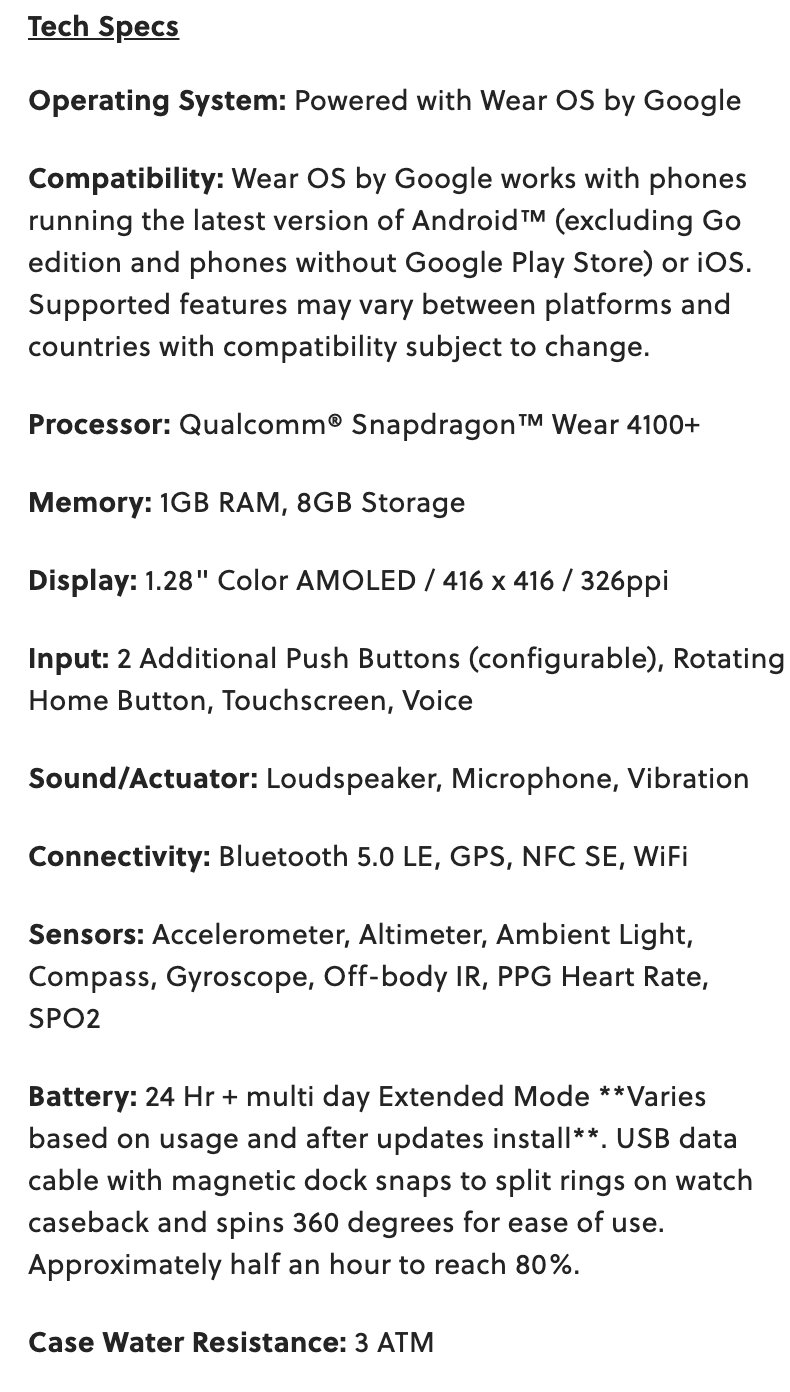
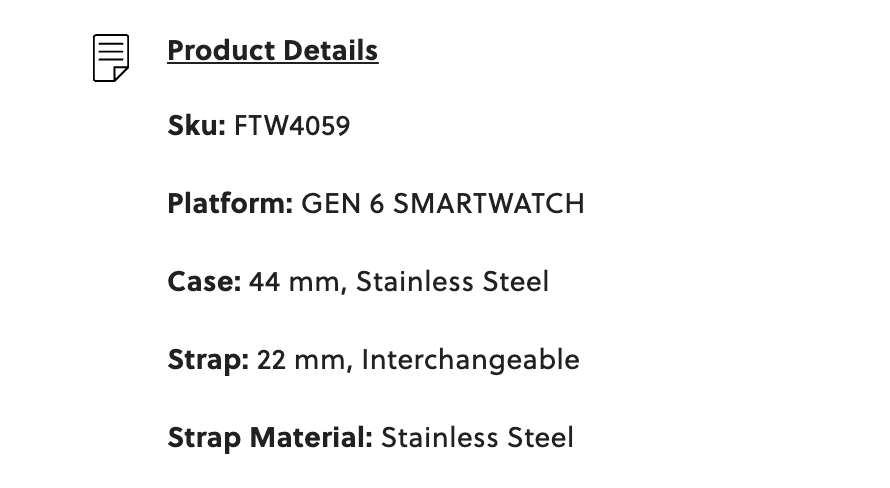
They even offer the opportunity for their buyers to utilize a virtual shopping assistant - interested customers can book a meeting with a Fossil sales associate from the comfort of their own home and receive all the guidance and advice they need to make an informed decision. This type of virtual shopping behavior and advancements in technology are going to have a huge impact on shopping behaviors, but more on this later.
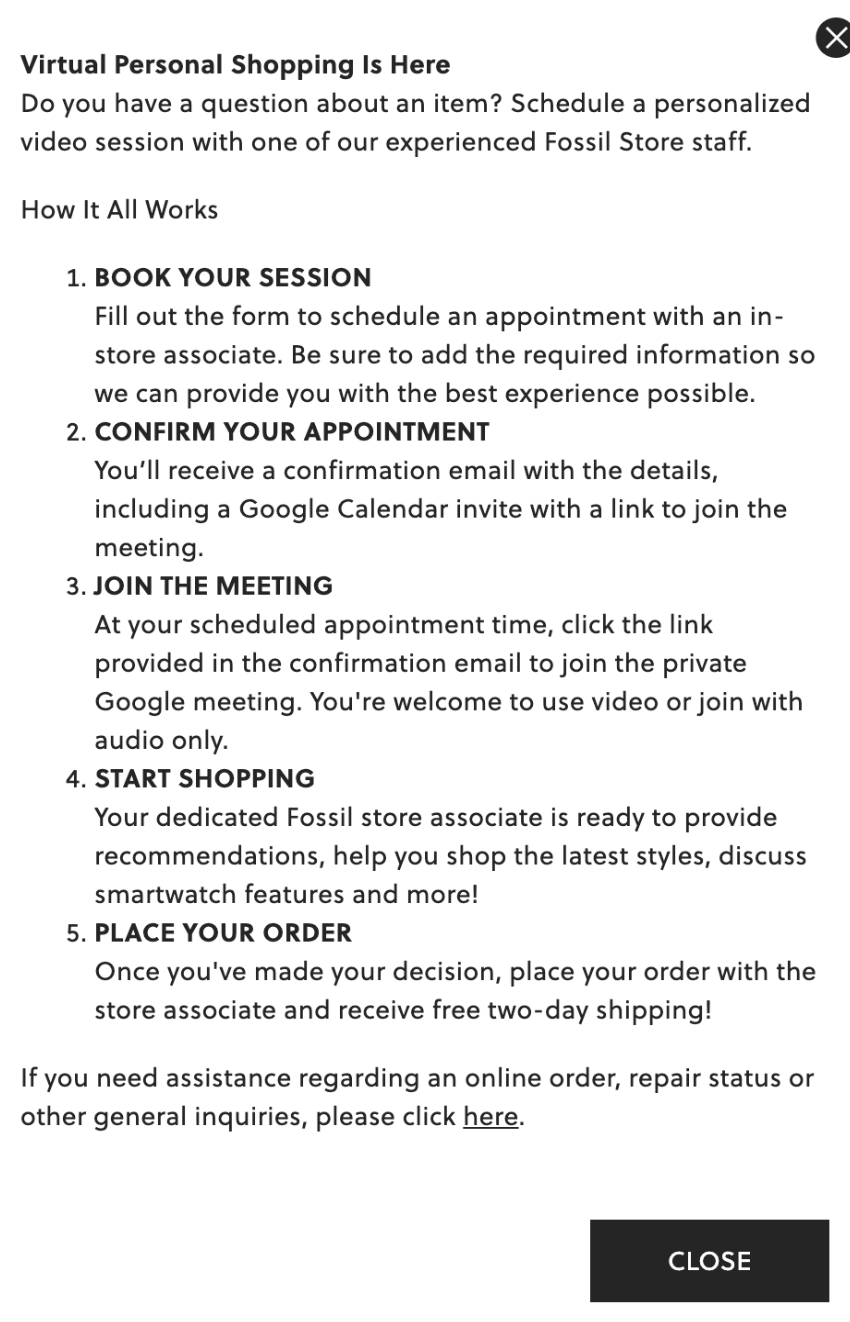
Outside of their own eCommerce website, Fossil does a fantastic job of keeping their shopper’s experience consistent and compelling on other channels as well. Let’s take a look at both Instagram and Amazon - again, it’s important to provide all the accurate, up-to-date product information and visuals that a customer may need to make a purchase decision, but their experiences on both of these digital touchpoints will be quite different.
On Instagram, there is obviously a heavy focus on imagery and videos. Fossil makes it easy for their potential customers to research, view, compare, and purchase their products without ever having to leave the social media site.
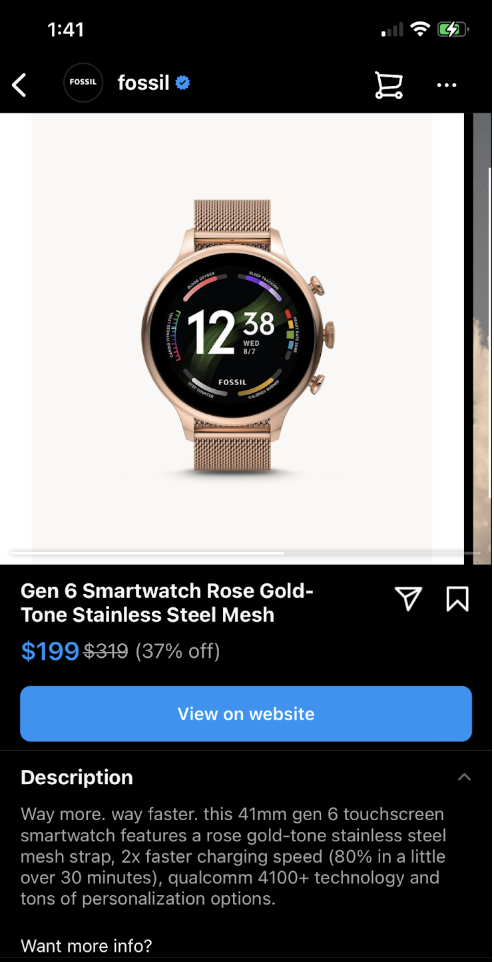
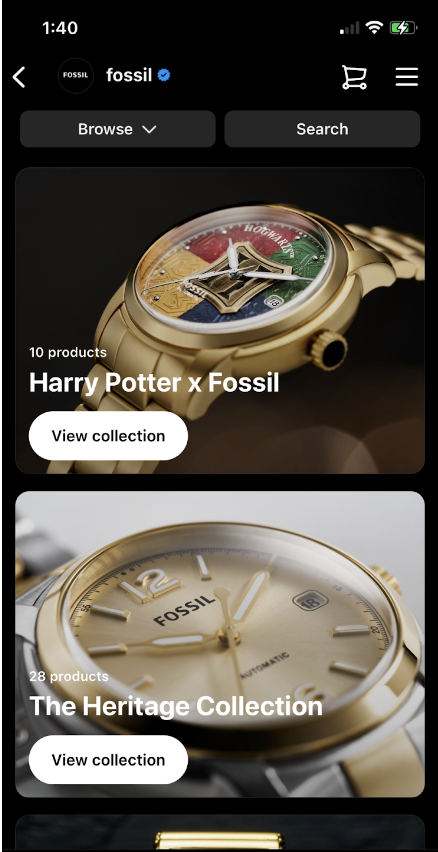
We’d be remiss not to take a look at Fossil’s presence on internet retailer behemoth, Amazon. With hundreds of thousands of sellers listing millions of products, it can be easy to get lost in the crowd; how do you stand out? By providing the right information, in the right way, at the right place. Fossil has managed to create compelling visuals that catch the eye and provides important product information that allows shoppers to compare products and ensure they’re making the right choice before clicking ‘Buy Now’.

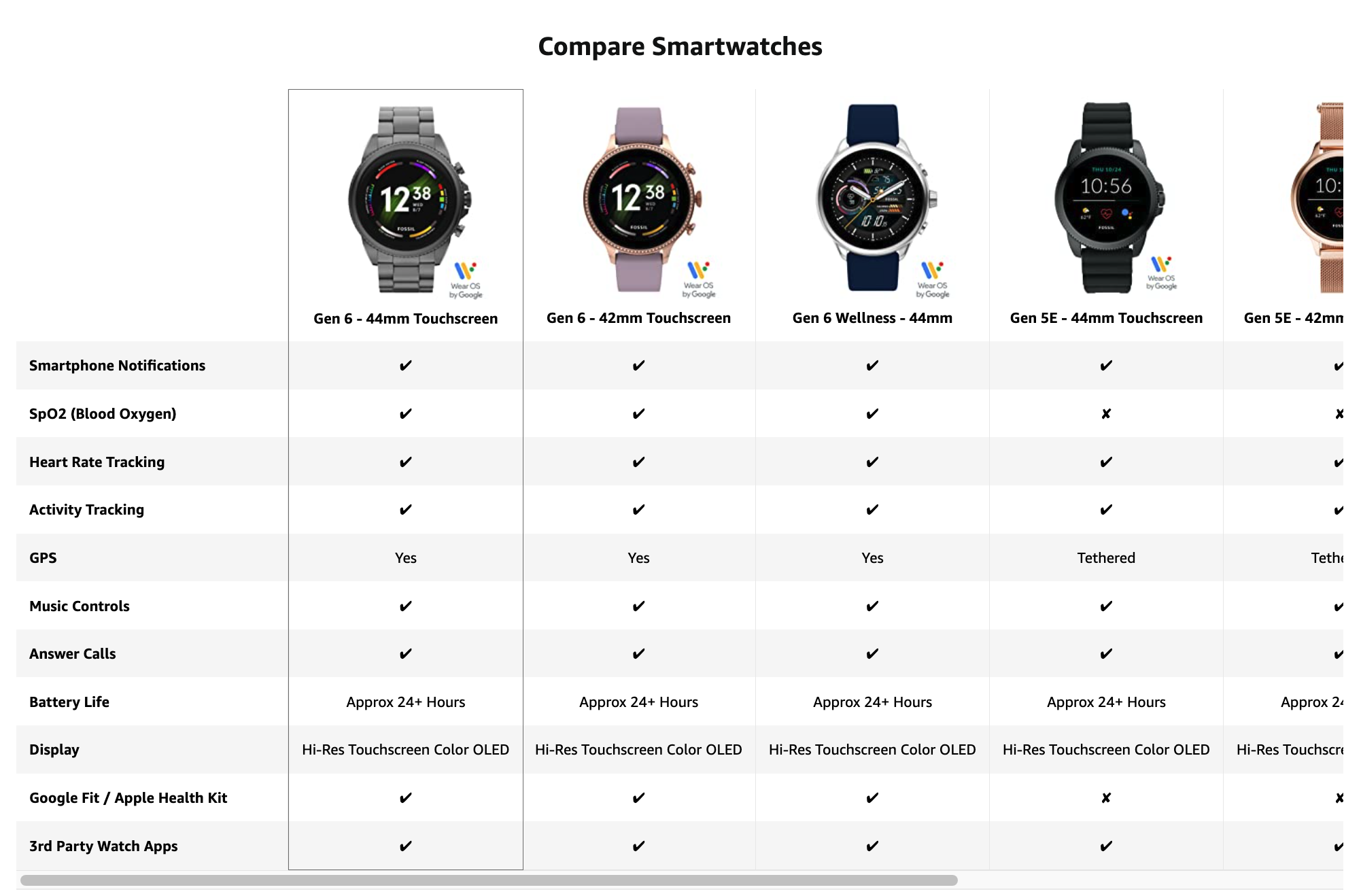
Whether a shopper stumbles upon a Fossil product on Instagram or Amazon, or goes directly to their eCommerce site, Fossil has ensured that they’re providing consistent and compelling product experiences across each of these channels, and more. With two-thirds of shoppers saying that just one bad product experience can lead to an abandoned purchase, Fossil’s omnichannel product activation strategy means that they’re providing strong customer experiences across the touchpoints of today and tomorrow, setting themselves up for success in 2023 and beyond.
With advancements in technology and deeper insights into customer shopping behavior, brands and retailers are now able to offer highly personalized product recommendations and experiences to their customers. This can help to build loyalty and drive sales, as customers are more likely to make a purchase when they feel that an organization understands their needs and preferences. With 71% of consumers expecting companies to deliver personalized interactions, it’s no longer a luxury to offer this type of customized shopping experience but a need in order to stay competitive in the coming years.
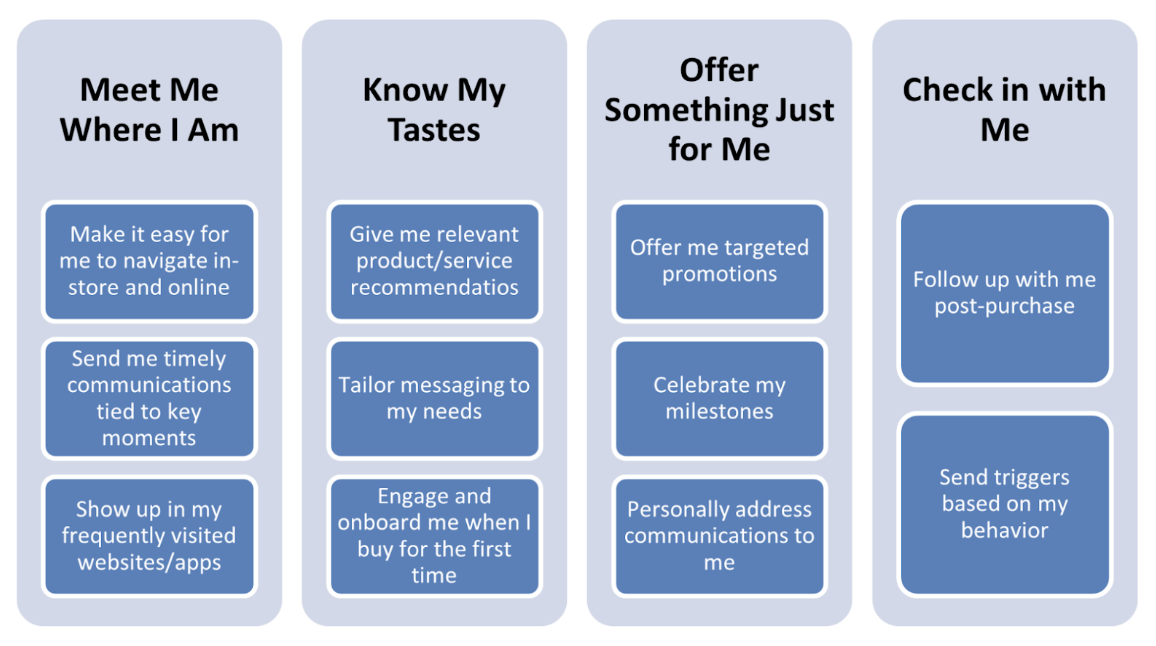
Let’s take a look at Stitch Fix, an online personal styling service that’s boomed in popularity over the past few years, with over $1 billion in sales and over 3.4 million users, as of 2020. Stitch Fix relies on Artificial Intelligence (AI) and customer data to improve the shopping experience by providing completely personalized items and clothing and shops. They ask their shoppers to take a short style quiz, wherein they gather data about sizes, price range, and personal taste, and based off of their answers, Stitch Fix provides expertly-picked clothing packs and sets up a personalized store for shoppers to continue perusing.

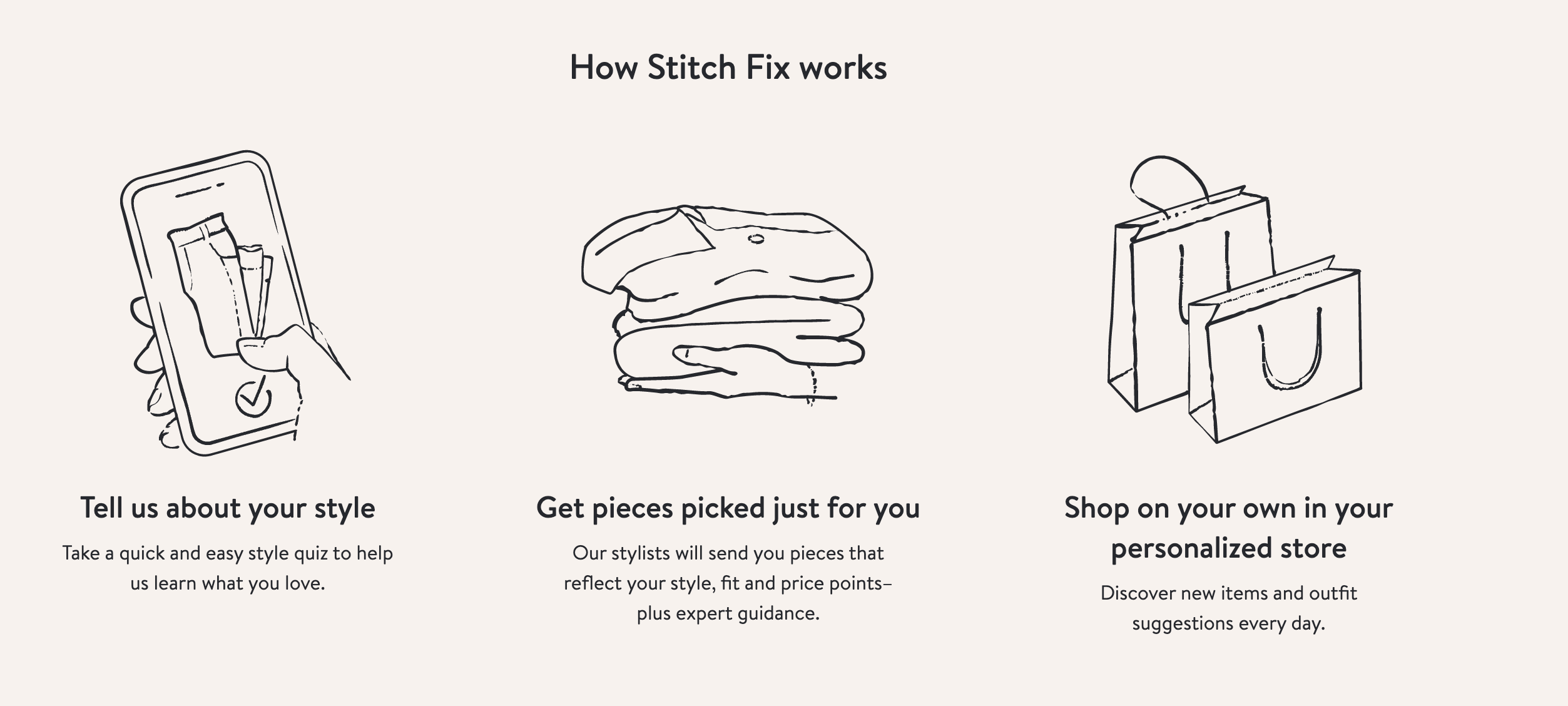
By leveraging the technological advancement of AI to pick clothing items for their customers, Stitch Fix ensures that each and every customer is receiving personalized care and attention even through a computer screen. Plus, this level of care and attention leads to reduced returns and exchanges, and more satisfied, loyal customers.
With more information at our fingertips than ever before, consumers, particularly Gen-Z consumers, are starting to base more of their decisions on how much their personal values align with a brand’s values. From social unrest to sustainability, what your company cares about matters, and incorporating your brand values into your messaging is a crucial way to connect with customers and build loyalty.
Take, for example, Belco Coffee, an independent family business that sources, imports, and distributes environmentally friendly and responsibly-sourced coffee from around the globe. Belco does a fantastic job of explaining their company’s mission, which is to provide authentic, innovative, and sustainable coffee, and to create long-lasting relationships with independent roasters.

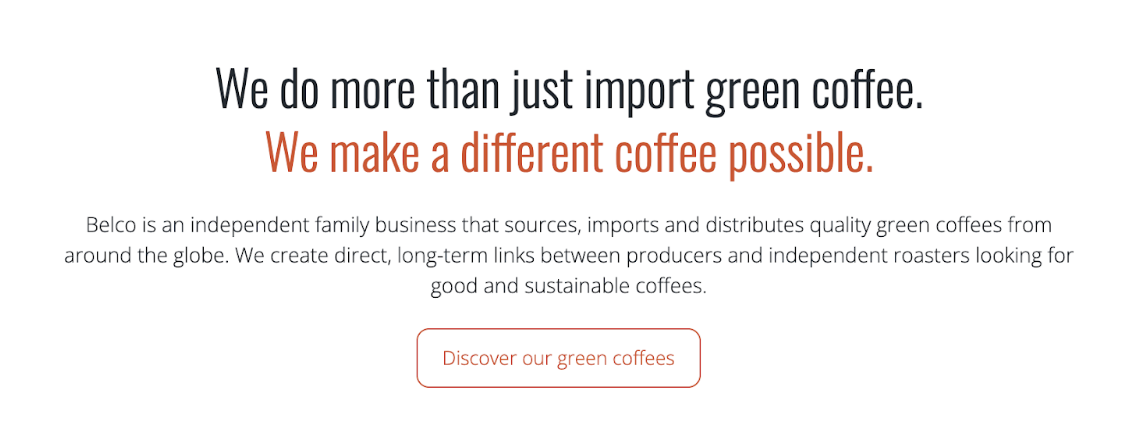
Beyond that, Belco Coffee doesn’t just inform their customers about their commitment to sustainability, but actually provides context and important information on how they’re ethically-sourcing their products. This establishes a deeper connection with their customer base, providing an in-depth look into their processes and practices so that their consumers feel comfortable and confident that the products they’re purchasing align with their personal values.
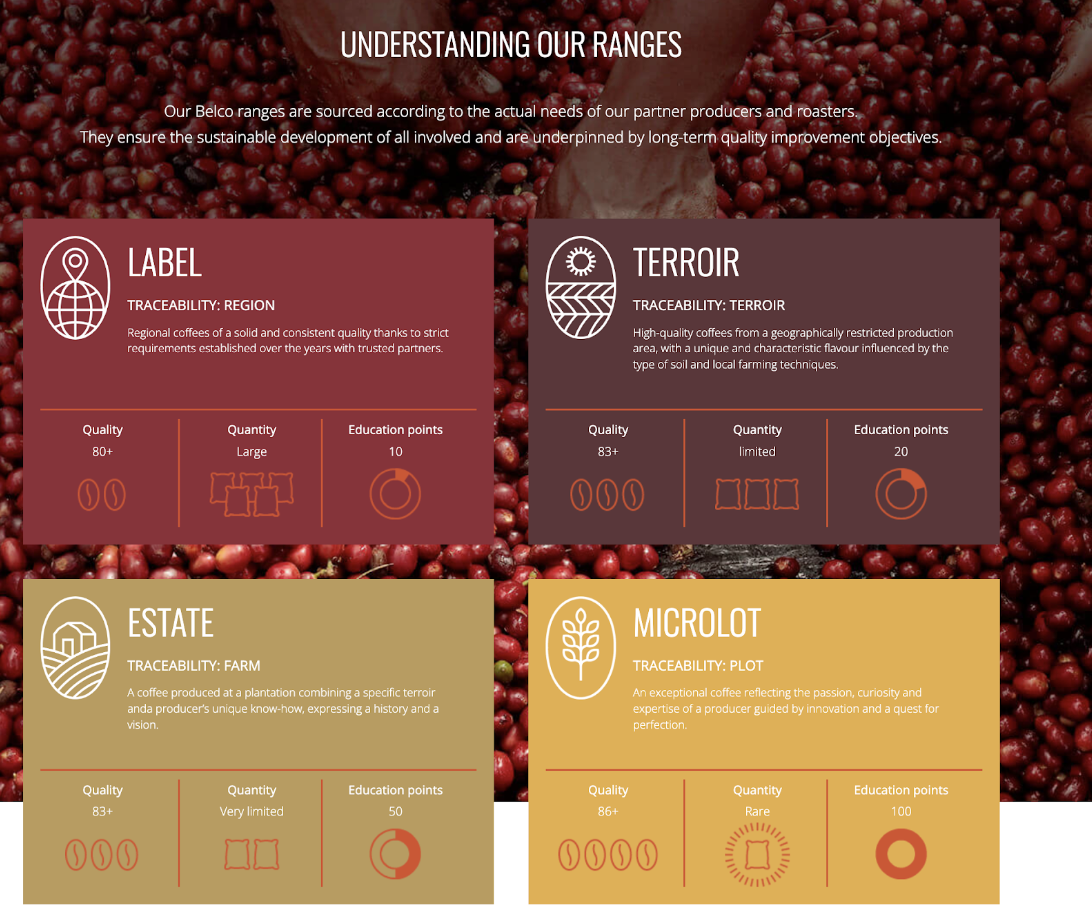
Consumers are becoming more aware of the environmental impact of their purchases, and many are looking for products that are made from sustainable materials and produced in a way that is environmentally friendly. Communicating your commitment to sustainability is not only good for the future and the environment (after all, there is no global economy if there is no globe), but brands and retailers who are able to effectively communicate what they’re passionate about are likely to see a boost in sales as more and more consumers prioritize sustainability when making their purchasing decisions.
As we touched on earlier, the use of AI and other advanced technologies is becoming increasingly common in the retail industry, and is only expected to grow in 2023 and beyond. From augmented and virtual reality to voice search and personal assistants to cashless or contactless payment and delivery options, the blending of technology and retail can help retailers better understand their customers and provide more personalized shopping experiences, as well as streamline operational processes and costs.
A great example of this is Swedish home goods manufacturer and retailer, IKEA. Released back in 2017 and still thriving today, the IKEA Place App allows users to utilize Augmented Reality (AR) to virtually place furniture items in their own home and get an idea of how the product will fit and work in the space. You can share or save pictures, price and reserve items you like, and purchase the item to either be shipped directly to you or picked up at the nearest IKEA location.

Obviously, this provides a number of benefits to consumers; with a much better idea of the size, shape, and color of the item, customers are able to purchase with more confidence than ever before, resulting in reduced returns and satisfied, loyal customers. As technologies like AR, VR, and AI continue to evolve and improve, organizations that incorporate these innovations are able to provide stronger customer experiences and empower their consumers to keep coming back to see what’s next.
The rise of social media and other online platforms is changing the way that retailers interact with their customers. According to a study conducted by Forbes, 75% of retailers are now selling on social media, and 43% of retailers who sell on social platforms say that half or more of their profit comes from social media sales.
With such staggering numbers, we can expect to see more and more retailers using social media not only to advertise their products, but also to build relationships with their customers and provide them with valuable information and resources in 2023. In turn, this can help drive sales, not only because it’s an additional sales channel, but also because customers are more likely to make a purchase when they feel connected to a brand.
Social media provides a unique, personal way to directly interact with customers and share genuine user-generated content. For our last example, let’s take a look at Brazilian flip-flop brand, Havaiana’s. With a thoughtfully curated and designed Instagram feed strategic partnerships with prominent influencers, Havaiana’s has been able to craft a very strong social media presence that effectively communicates the essence of their brand. Plus, they regularly interact with followers and fans of their account by replying or reacting to comments, which encourages even more engagement.
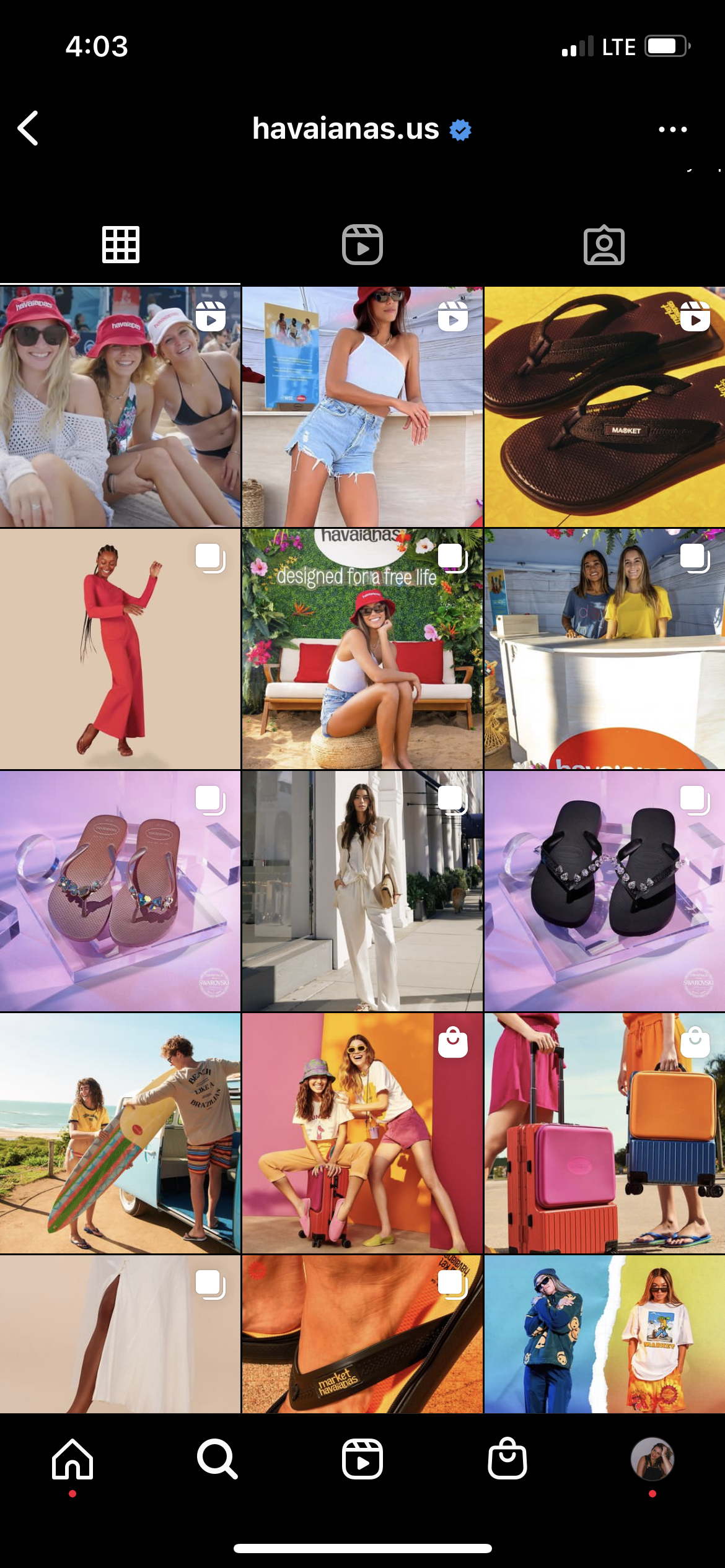
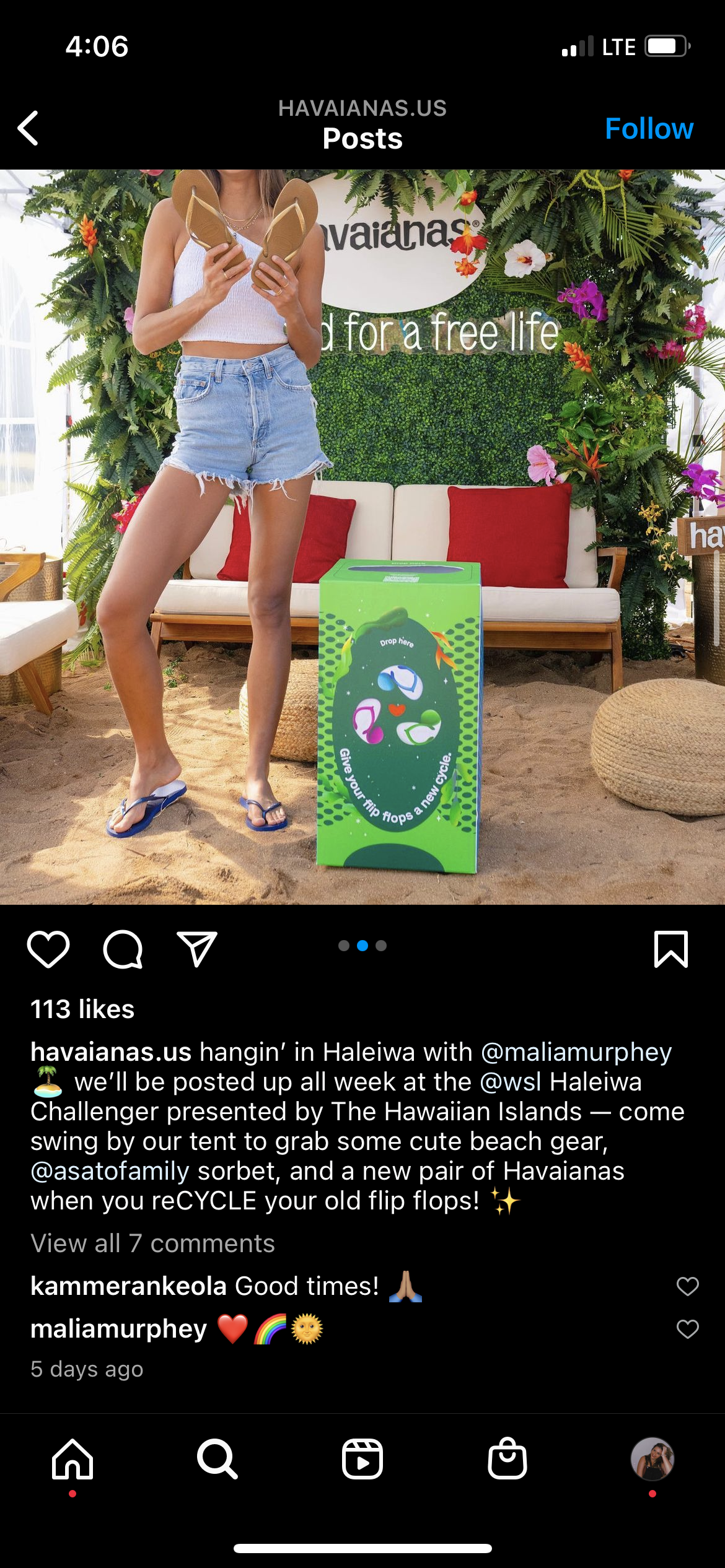

Havaiana’s doesn’t just stop at Instagram - if we hop on over to Tik Tok, we can see that the sandal company has done a fantastic job of curating a strong community of engaged users on the video-sharing platform. They’ve crafted content specifically for the channel, instead of just repurposing their existing content on Instagram, ensuring that their followers get a unique, but compelling, experience on every social media channel. This has garnered them many viral videos, including a series that’s accrued over 17 million views. By embracing new technologies and adapting to new social commerce platforms, Havaiana’s has been able to reach new audiences and establish stronger, more loyal relationships with their customers.



To 2023 and Beyond
Despite what many economists and analysts would want you to believe, nobody can predict the future. What we can do is take a look at consumer behavior and analyze the strategies that companies are using to successfully navigate such uncertain times. Technological advancements and economic unrest mean that the retail landscape is changing at a break-neck speed, and organizations who are able to adapt and optimize their presence on new channels and markets are the ones who will be around for the long haul.
Interested in future-proofing your organization through 2023, and beyond? Reach out to an Akeneo expert today to see how we can set you up for success.

Discover what makes Akeneo more than just a workplace. From fostering a culture of care and work-life balance to providing opportunities for growth...
Read more
2024 has been a year to remember for Akeneo. For the third day of PXMas, we’re sharing the stories behind just a few of the prestigious awards...
Read more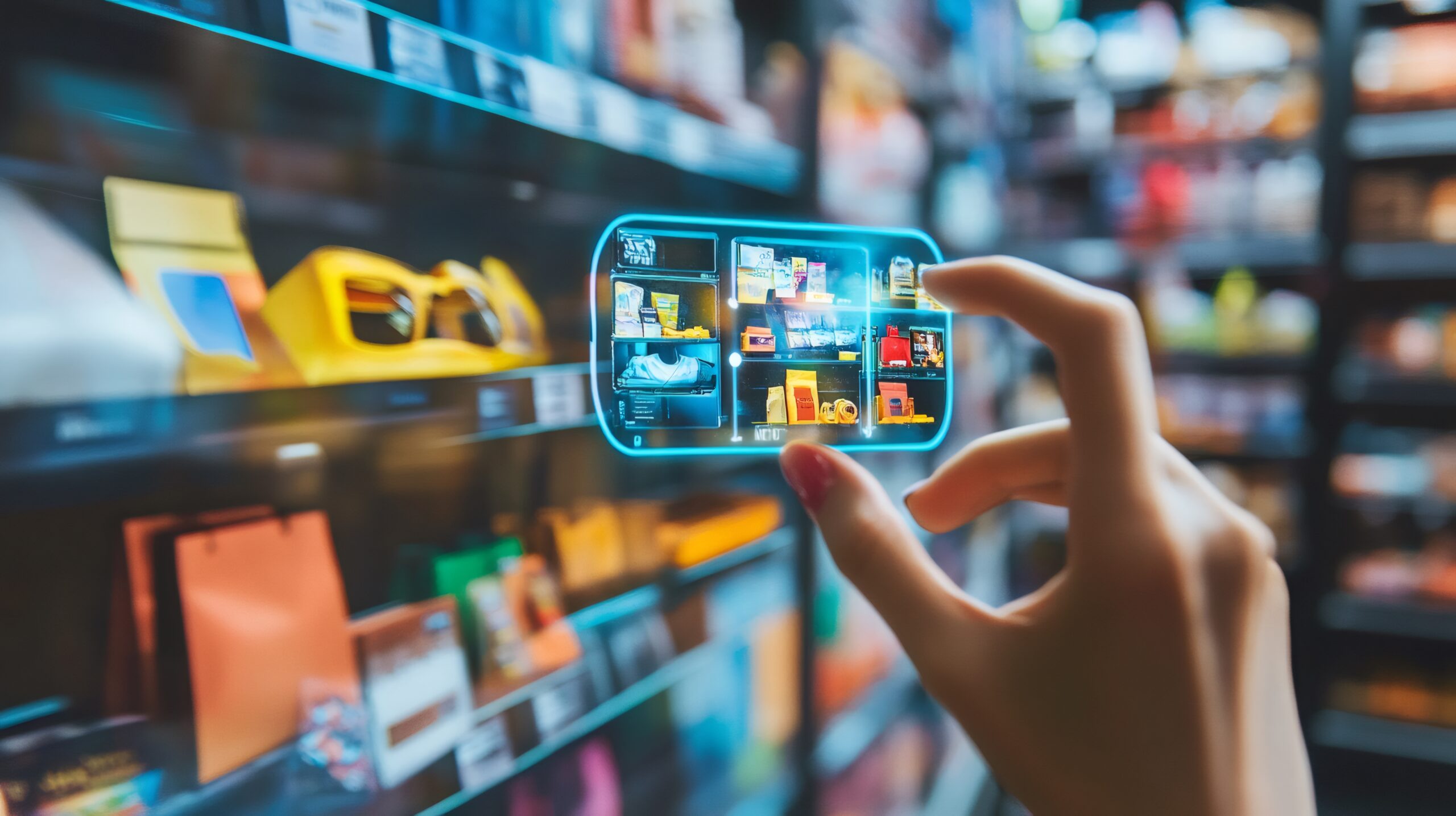
The traditional methods that brands and retailers have been using to win customer's attention on the physical shelf for decades won't always...
Read more